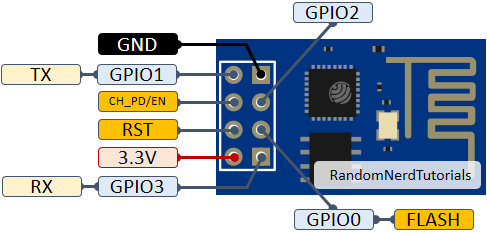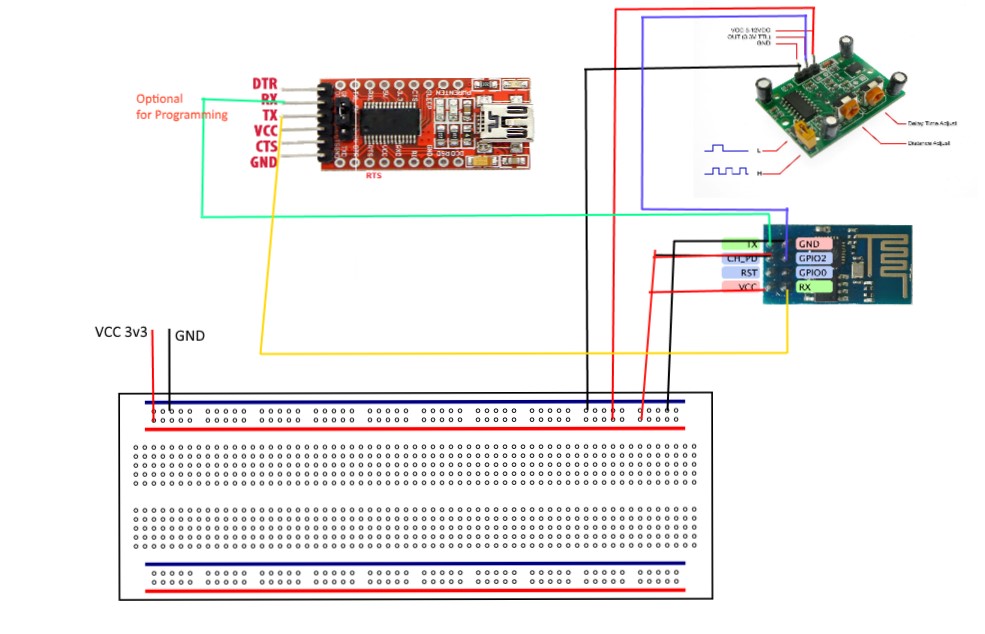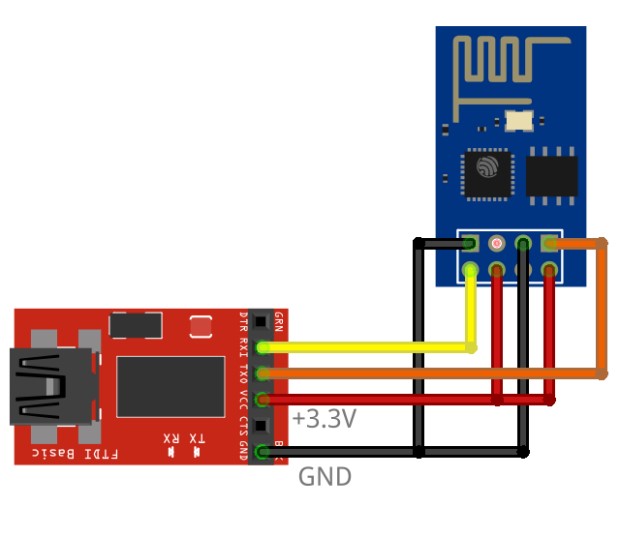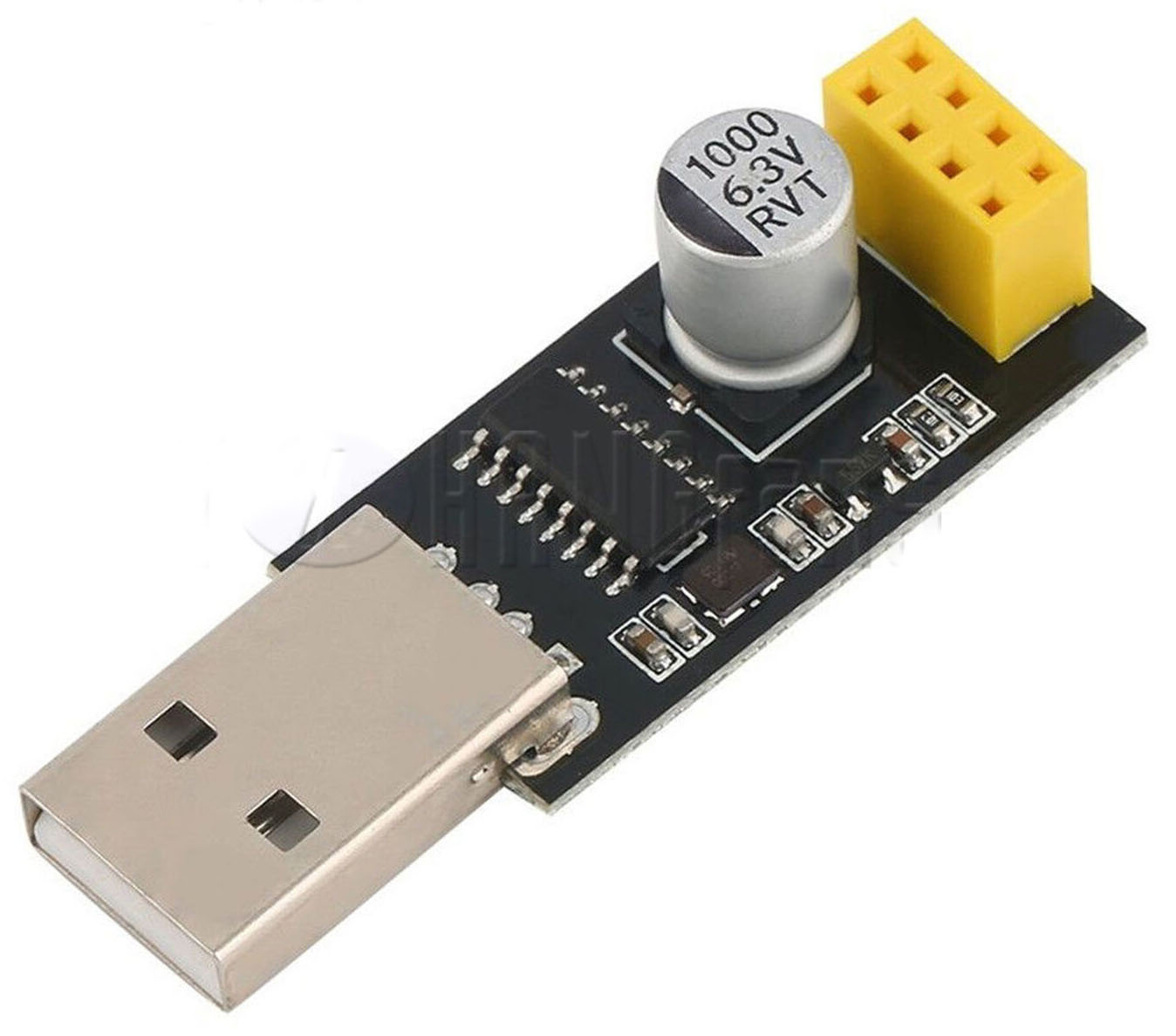The ESP8266 is a low-cost Wi-Fi microchip, with built-in TCP/IP networking software, and microcontroller capability, produced by Espressif Systems in Shanghai, China in 2014
It came in at an incredibly low price of $3 – $6.
Compared to the cost of Arduino’s Wi-Fi shield model, which cost you approximately $30!!!
What is ESP8266? Well it is a tiny self-continued, low power and high performance system on chip (SoC) with the ability to communicate over TCP/IP network via antenna that’s etched on its circuit board (PCB). It comes with its own board processor, so it can actually function in complete autonomy, without an additional Arduino board.
Features

- Processor: L106 32-bit RISC microprocessor core based on the Tensilica Diamond Standard 106Micro running at 80 or 160 MHz[5]
- Memory:[6]
- 32 KiB instruction RAM
- 32 KiB instruction cache RAM
- 80 KiB user-data RAM
- 16 KiB ETS system-data RAM
- External QSPI flash: up to 16 MiB is supported (512 KiB to 4 MiB typically included)
- IEEE 802.11 b/g/n Wi-Fi
- Integrated TR switch, balun, LNA, power amplifier and matching network
- WEP or WPA/WPA2 authentication, or open networks
- 17 GPIO pins
- Serial Peripheral Interface Bus (SPI)
- I²C (software implementation)
- I²S interfaces with DMA (sharing pins with GPIO)
- UART on dedicated pins, plus a transmit-only UART can be enabled on GPIO2
- 10-bit ADC (successive approximation ADC)
How to choose your ESP8266 Model?
There many variations available in the market and it is very easy to get confused between all the choices. Below is a list of widely used variants and its capabilities.
1. ESP-01 Module
The first one we will discuss is ESP-01 Module: It is one of the most popular boards that have on-board printed antenna and header block for easy access to pin-outs.
Features:
- GPIOs: 2 GPIO Pins (GPIO 0 and GPIO 2)
- Wi-Fi Range: 360m
- Dimensions: 14.3 x 24.8mm
- Antenna: PCB trace



2. ESP-03 Module
For more advanced user ESP-03 is the most popular choice as this version has the most GPIOS, it means you can connect more number of sensors or more complicated sensors with you ESP module.
Features:
- GPIOs : 7 GPIO Pins(GPIO0/2/12/13/14/15/16)
- Dimensions: 17.3 × 12.1mm
- Antenna: Ceramic

3. ESP-05 Module
ESP-05 Module: In ESP-05 a fifth pin is added carrying reset pin, but this module doesn’t consist of on board antenna.
Features:
- GPIOs: none
- Dimensions: 14.2 x 14.2mm
- Antenna: External (U-FL connector)

4. ESP-07 Module
ESP-07 Module: Best part of ESP-07 is that it has its own on board Ceramic antenna and you can also connect external antenna.
Features:
- GPIOs: 9(GPIO0/2/4/5/12/13/14/15/16)
- Dimensions: 22 x 16mm and Antenna: Both Internal and External, but ESP-07 is not FCC approved.

5. ESP-12 Module
ESP-12 Module: One of the newest and popular members of ESP family, consisting of lots of computational power.
Features:
- GPIOs: 9 GPIOs + ADC
- Dimensions: 24x16mm
- Antenna: PCB antenna

ESP-01 Connection with PIR sensor and FTDI(for programming)
It is important to note that the ESP8266 is 3.3V

ESP to FTDI direct Connection for Programming

ESP01 Programmer

